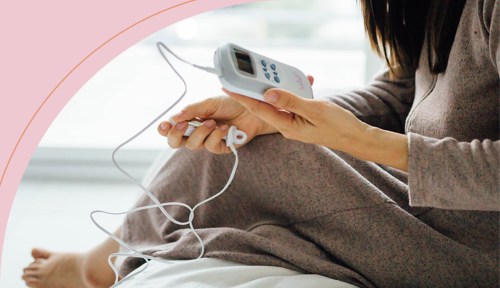advertisement
If You Pee a Little When You Laugh, You Def Aren’t Alone—Here’s an OBGYN’s Tips for What To Do About It
One in four women deal with urinary incontinence, so we tapped an OBGYN to share their tips on what to do about it, from kegels to workouts.

If you’ve ever had a case of the giggles or sneezed out of nowhere and felt a drip (or a few…) slip out, guess what? You’re in good company, because it’s estimated that one in four women deal with some sort of urinary incontinence.
“Urinary incontinence is typically caused by problems with the muscles and nerves that help the bladder hold or pass urine,” says Lucky Sekhon, double board-certified reproductive endocrinology, infertility specialist, and OBGYN. But why do so many women specifically deal with these muscle and nerve issues?
“Certain health events that cause UI are unique only to those who are genetically female, such as pregnancy, childbirth, and menopause, as they can cause pelvic floor issues that lead to urinary issues,” Dr. Sekhon says. “A large proportion of women will experience one or all of the above listed health events making it common.” So, basically we’ve all been there, and if you haven’t, you probably know someone who has.
Now that we know what’s going on and why incontinence is such a thing for so many women, here’s the good news: You can do something about it. After doing some digging and tapping Dr. Sekhon for all the intel on incontinence, we found some easy-to-implement tips you can integrate into your life that’ll help prevent future sneeze-and-pee slip-ups.
Keep scrolling for expert-approved ways to help you deal with urinary incontinence.
1. Start doing kegel exercises
If you haven’t heard of them, Kegel exercises work to strengthen your pelvic floor muscles—and toning them can help combat a rogue drip after a good joke as well as improve sexual performance and expression. (Working them out is starting to sound better and better, huh?).
“[Manual] Kegels are done by repeatedly squeezing the pelvic floor muscles for three to five seconds and relaxing the pelvic floor muscles for three to five seconds,” Dr. Sekhon says. “Typically you want to start off small—five to 10 times, and work your way up to around 100 Kegels per day.”
On top of keeping count of your reps, Dr. Sekhon says the most important thing is to ensure you’re doing the Kegels correctly—which can be hard to decipher when you’re new to exercise, and not sure what to feel for. Science backs that up too: Research has shown that as many as 60 percent of people find it difficult to determine if their pelvic muscle exercises have been performed correctly, even when guided by a licensed healthcare professional. And if you’re not performing the exercises properly, the results will obviously diminish.
To make sure you’re doing your kegels correctly, you can try The Yarlap® with AutoKegel® technology. It’s an FDA-cleared device that tones your pelvic floor muscles for you—all you do is select the program and comfort level prefer, and sit and relax back. After two to 12 weeks of these simple, 20-minute sessions, you should already start feeling results. (If only real working out were this easy.)
2. Monitor your diet habits
Switching up your diet won’t fix your incontinence issues, but it’s a good idea to start keeping track of what you’re eating and drinking to see if you can identify any patterns between specific ingredients and the rise of pee problems.
According to the National Association for Continence, there are also some common bladder irritants you can try to avoid—like alcohol, apples, carbonated beverages, chocolate, honey, and vinegar—to see if they’re causing some of your oops-I-peed moments. Caffeine can also increase bladder activity, so it couldn’t hurt monitoring your coffee intake, too. Sorry, latte-lovers.
3. Don’t sleep on your workouts
Dr. Sekhon notes that maintaining a healthy lifestyle (i.e. diet, exercise, and proper treatment of chronic health conditions) can play a role in helping to prevent and treat urinary incontinence. And while your incontinence might initially be triggered by too much movement (jumping jacks, we’re talking about you), you should still aim to get in your daily dose of movement—because it can help in the long run.
The NAFC says muscle strength peaks in your twenties and thirties and by 50, the majority of us will start to lose muscle fiber. So, even if it’s 30 minutes of walking with some free weights and push-ups thrown into the mix, your body (even you-know-where) will feel the difference. Not to mention, one of the most important parts of your workout routine is your Kegels—and you don’t even have to do much while your Yarlap® does the workout for you—which are the first line of defense for stress urinary incontinence, according to NAFC. Here’s to laughing (and staying dry) in the face of incontinence.
Top photo: Yarlap/W+G Creative
Sign Up for Our Daily Newsletter
Get all the latest in wellness, trends, food, fitness, beauty, and more delivered right to your inbox.
Got it, you've been added to our email list.




